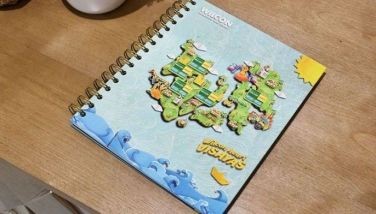The Galleons of Cebu
October last year, thousands of Cebuanos lined up at Pier Uno to experience a real galleon. Some stood hours under the sun, while others stayed out during the rain. But it was worth it: they walked the deck of a ship that was previously read only in history textbooks.
The Andalucia’s visit was part of the festival commemorating the famous Manila-Acapulco (Mexico) galleon trade. Those small, wooden ships, equipped only with sails, made the dangerously long and lonely voyage across the vast Pacific for centuries. Their historic journey however, began here in Cebu, 446 years ago today.
It was June 1, 1565 when the galleon San Pedro hurried out of Mandawi Bay, right across Mactan Island. The ship was sent to find the return route to Mexico via the Pacific which had evaded previous attempts, from Ferdinand Magellan’s Trinidad to Ruy Lopez de Villalobos’s San Juan de Letran. Ably navigated by Fray Andres de Urdaneta, the ship crossed the wide ocean for four difficult months before it reached Acapulco on October 8. It brought the first cargo of cinnamon spice from Butuan to Mexico; this voyage began the 250-year galleon trade.
Several more galleons travelled the Cebu-Acapulco route. The San Geronimo came to Cebu on October 15, 1566 to report the San Pedro’s successful eastward crossing. The following year, the San Juan, carrying 7000 kilos of cinnamon, traced the route laid out by Fray Urdaneta. The San Pedro also returned to Cebu accompanied by two other ships: the San Lucas and the Santa Clara. They brought the long awaited supplies and additional men for the young Spanish settlement in the island.
In 1568, the San Pedro sailed again for Acapulco with a much bigger cinnamon shipment—34,000 kilos of the spice, but she never reached Mexico; she encountered storms that battered her to the brink of sinking. The crippled ship turned around and was fortunate to reach the island of Cebu. That was the end of the historic San Pedro, the first ship to sail the galleon route was also its first casualty. Another galleon, the San Lucas, also left from the island in 1569.
Then, Miguel Lopez de Legazpi moved the main Spanish settlement to Panay, and later to Manila. The ships also followed to Manila Bay; this transfer ended the early exchange of galleons between Cebu and Acapulco.
The next decade saw the growth of the Manila-Acapulco trade. Manila was sending one or two ships annually—a few times it sent three or four—crammed with merchandise from China, Japan, the Moluccas, and the Philippines. Still, a galleon strayed into the southern port. The Santiago sailed into Mandawi Bay in 1572 bare of equipments and riggings. Twenty-two years later, the San Felipe was about to leave the same bay when it was detained by storms; it stayed at the port for a year. This ship finally sailed in June 1594 bearing the delayed news of the death of the governor-general of the Philippines who was killed a year earlier. Between the Santiago (1572) and the San Felipe (1594), a few more galleons probably sailed in and out of Cebu’s port.
The city’s Spanish citizens joined the trade by bringing their cargoes to Manila or by sending these in the occasional ships, like the San Felipe, that sailed from Cebu. The inconvenience of this arrangement, combined with the sparkle of silver earned by the Manila galleons, encouraged them to petition the king for a ship of their own.
They were granted one: in April 23, 1594 a royal decree authorized them to send a ship to Acapulco once a year, but with limited cargo. The Spaniards in Cebu can trade with the products of the Visayas but not with silk, the most popular item among the Mexicans. The city enthusiastically grabbed the opportunity, and sent a galleon in 1595 (the ship was also named San Pedro), in 1596, and in 1597. Unluckily, the last one was lost at sea, an early disaster to their young venture.
Despite the loss of a galleon, the Spaniards continued with the trade; more ships were sent to Mexico. But the enthusiasm was gone when the wealth they expected did not come. The products exported were not very profitable: cinnamon, wax, lompotes (cotton cloths) and cocoa were not as saleable as Chinese silk. Sometimes, the year’s sale could not even pay for the galleon operation. Regretfully, they abandoned the trade in 1604.
The galleons of Cebu are long gone, like Mandawi Bay that has been eaten up by a reclamation project which altered the shape of its coast—its only trace is the name of the city on its northern corner, Mandaue. However, our experience with Andalucia remains. So just imagine: four centuries ago, off the shores near Fort San Pedro, the ship’s ancestors were at anchor on the same waters where she did. Now, we have a more vivid memory of our old galleons.
- Latest
- Trending




















